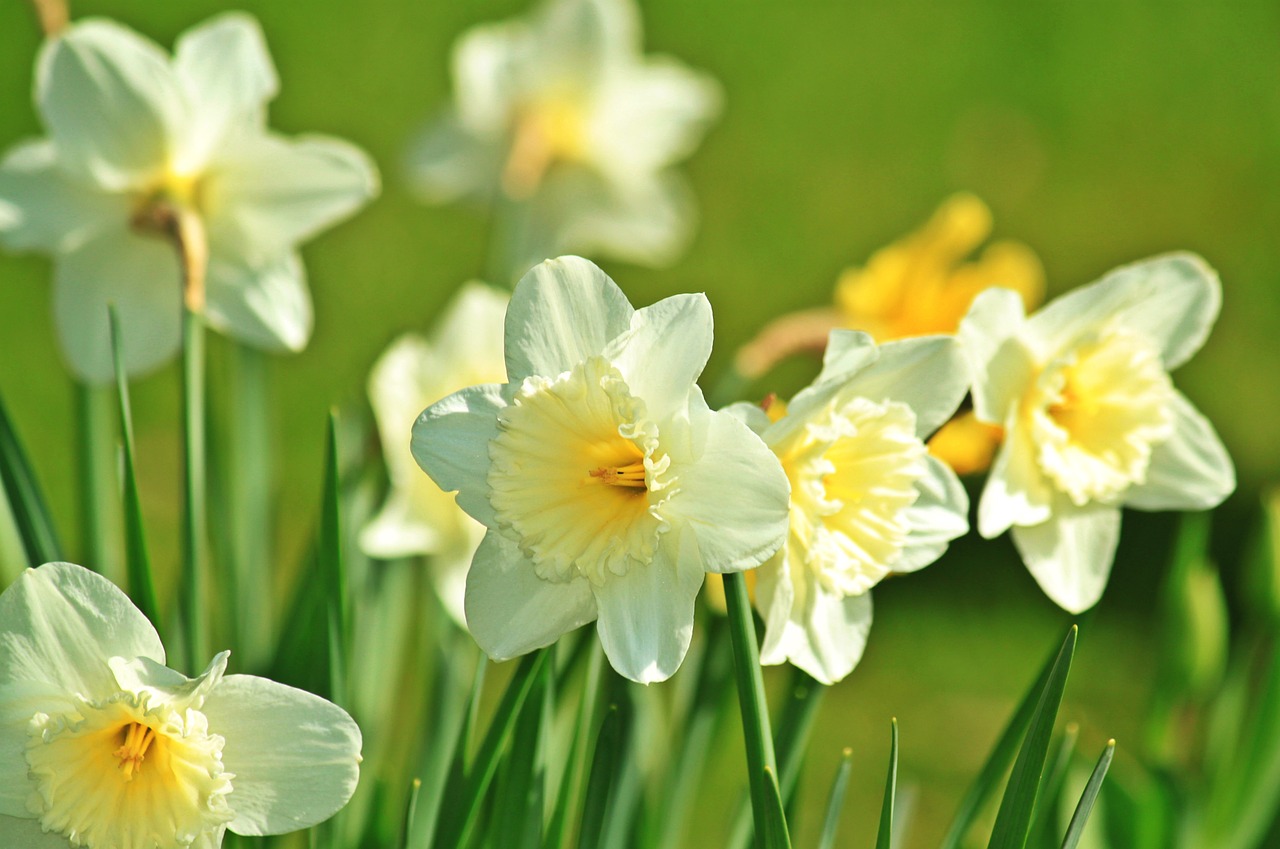Daffodils, Jonquils, in England “Lent Lilies”—whatever you call them, they’re still the quintessential flower of spring to many people.
Daffodils are members of the Amaryllidaceae—the amaryllis family. Relatives include agapanthus (Lily-of-the-Nile), hymenocallis (Peruvian daffodils), sternbergia (Lily-of-the-Field), alliums (onion family, including onions, garlic, chives, and ornamental onions), lycoris (Naked Ladies, Spider Lilies, Surprise Lilies), and hippeastrum (Christmas amaryllis).
The correct botanical name for daffodils is narcissus. The correct common name is daffodil. A jonquil is specific type of narcissus—narcissus jonquilla. The true jonquil has a smaller rounder flower with a flatter cup, a multi-flowering habit, and a sweet fragrance. Southerners often mistakenly call all daffodils jonquils.
To put it another way—all jonquils are daffodils, but not all daffodils are jonquils.
All members of the amaryllis family are poisonous; hence the reason that deer don’t eat the flowers and voles won’t eat the bulbs. This actually makes them a fairly effective botanical protection for other plants. If you ring your hostas with daffodils, voles burrowing underground will run into the daffodil bulbs and likely turn away—before they discover the yummy hosta roots behind them. Deer out foraging for yummy new spring growth will come across the foliage and decide to ignore that corner of the yard, often not checking back in until late summer.
Daffodils are terrific in combination plantings with bulbs like tulips. Because tulip bulbs go really deep (10 to 12” deep), you can cover them over and, at the six-inch depth, plant daffodil bulbs. The tulips will come up in between the daffodils. Voila! Instant protection for the tulips from both deer and squirrels! And, even better, a bouquet in one pot.
Daffodils are tolerant of a variety of conditions and only really have problems with two things—dense shade and wet feet. They’ll tolerate part-shade fine, however. Plant them about six inches deep any time after the middle of October for the best results.
Because daffodil bulbs have a habit of splitting and dividing, if you have a clump that is no longer blooming well, going in and dividing clumps and spacing the bulbs out will usually rejuvenate them nicely. Fertilize areas where you have daffodils planted every October with Espoma Bulb-tone.
Easy, tolerant, pest-proof—there are many reasons to plant daffodils. I do it because they’re beautiful and cheerful. To quote William Wordsworth, “and then my heart with pleasure fills and dances with the daffodils.”

